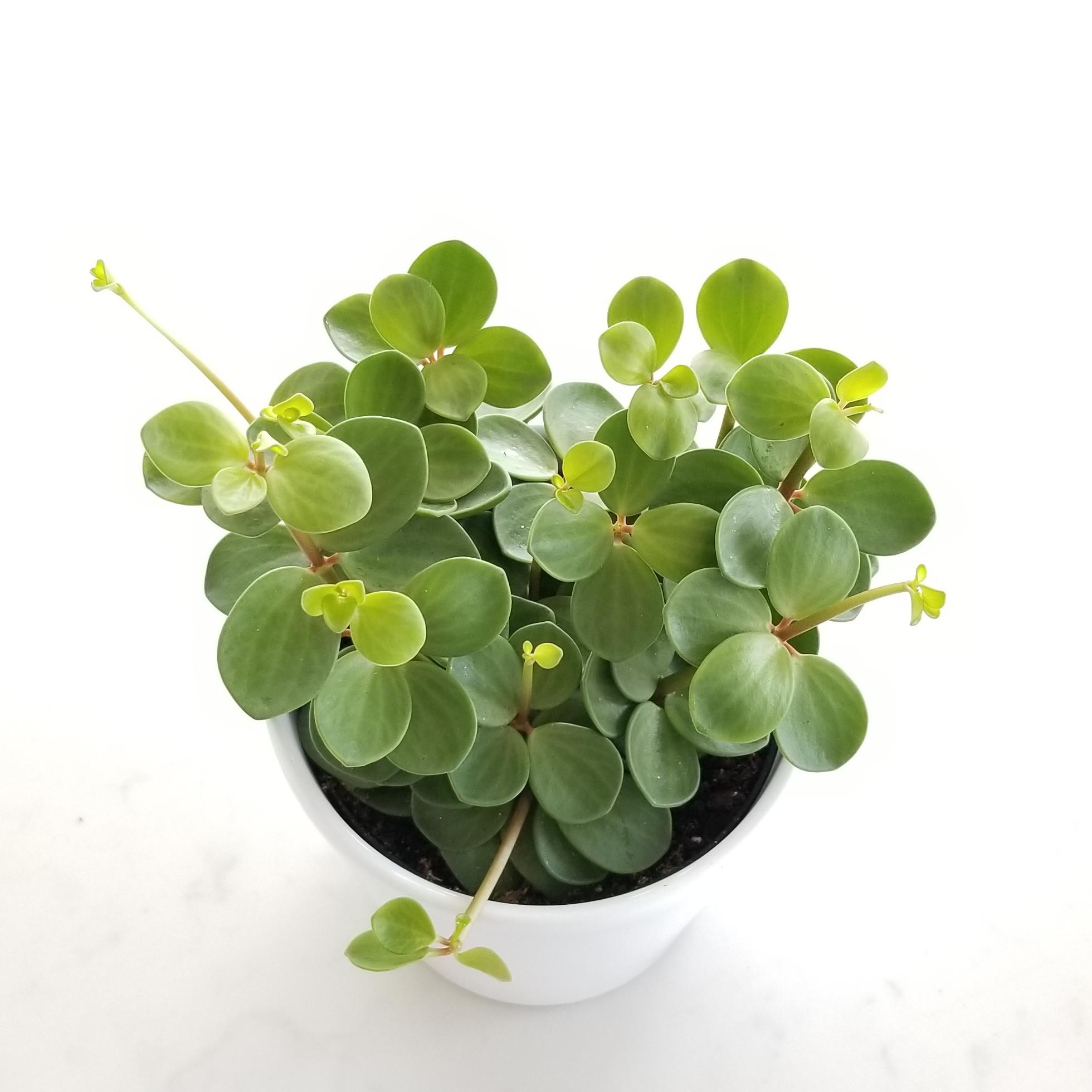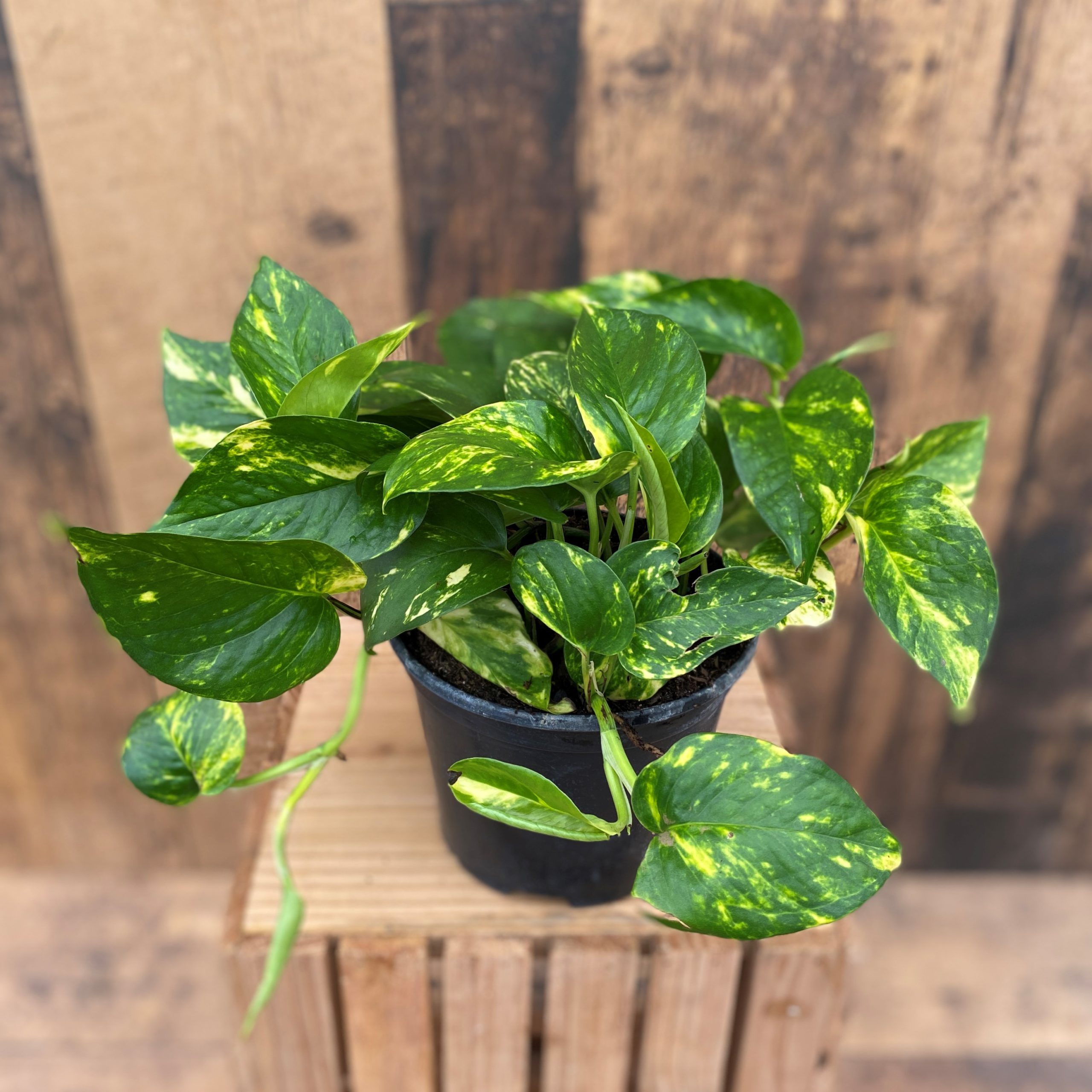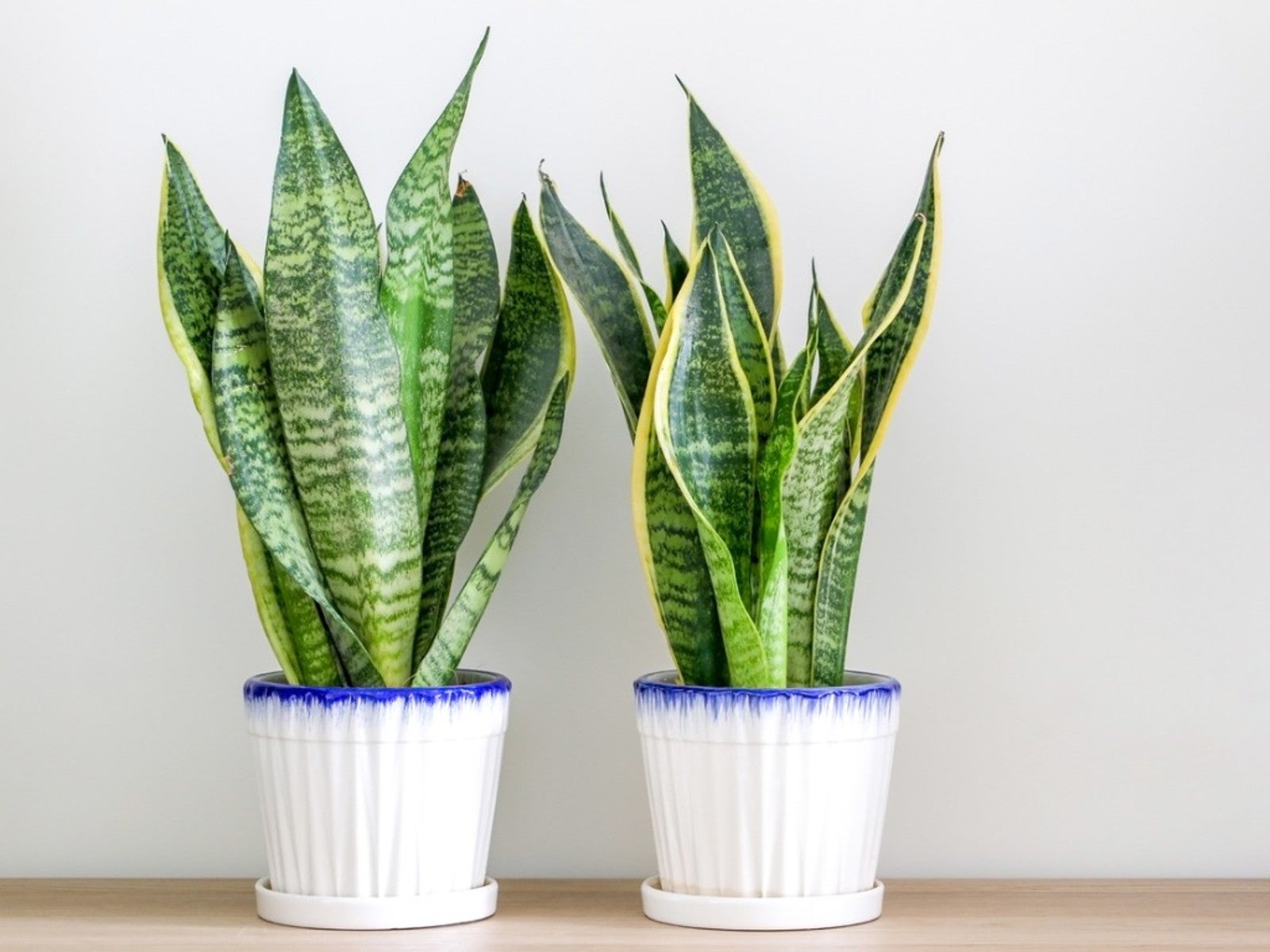
Cats are curious creatures that love to explore their surroundings, including plants. However, not all plants are safe for our feline friends. Are you a proud cat owner looking to bring some greenery into your home without compromising your feline friend's safety? Look no further! Here are the top 10 cat-friendly plants that will keep your kitty happy and healthy.
For more resources on pet friendly plants, check out the official ASPCA list here.
Shop all cat friendly plants here.
1. Peperomia Plants
Peperomia plants are safe for cats and come in a variety of shapes and sizes, making them a versatile addition to any home. With over 1,000 known species, these plants come in a wide variety of shapes, sizes, and colors, making them a popular choice for adding greenery to any space. Moreover, they have easy care requirements, and air-purifying benefits, making them perfect for new plant parents!
Here are some of our favourite peperomia varieties:
 |
 |
| Watermelon Peperomia | Peperomia Hope |
 |
 |
| Obtusifolia Peperomia | Peperomia Rosso |
2. Spider Plants
Spider plants are not only safe for cats but also fun for them to play with. Their dangling leaves are sure to entertain your curious feline. Also known as Chlorophytum, these are popular houseplants known for their air-purifying qualities and easy care.
Spider plants are known for their ability to produce "babies" or offshoots, which can be easily propagated into new plants. This means you have endless means to keep making new ones for your kitty to play with without having to purchase new plants.
:max_bytes(150000):strip_icc()/Catplayingspiderplant-79a35c10d4134d359c06fd29a1ac6ab6.jpg)
3. Money Tree, Pachira
The money tree, also known as Pachira, is a non-toxic plant that can bring good luck to your home while keeping your cat safe. The Pachira, also known as Pachira aquatica, is a tropical plant native to Central and South America. It is believed to bring good luck and prosperity to its owners, hence the name "Money Tree."
Note: there are a few plants that are called "money trees", but not all of them are safe for your cat! Pet-friendly money trees include Pachira aquatica or Pilea peperomioides and EXCLUDE Crassula ovata or Schefflera arboricola, which can be harmful if consumed by cats.

4. Polka Dot and Nerve Plants
Polka dot (Hypoestes) and nerve plants (Fittonia) are colorful options that will brighten up your space without posing a threat to your cat. These plants are not only visually appealing but also relatively easy to care for, making them popular choices among plant beginners.
 |
 |
| Polka Dot Plants (Hypoestes) | Nerve Plants (Fittonia) |
5. Ponytail Palm
The ponytail palm is a unique plant that is safe for cats and adds a touch of whimsy to any room. This fascinating plant, also known as Beaucarnea recurvata, is not actually a palm at all but belongs to the Agave family. These plants can live for decades and are relatively easy to care for, making them a popular choice for both beginner and experienced plant enthusiasts.

6. Prayer Plants (Maranta & Calathea Plants)
Prayer plants are not only safe for cats but also fascinating to watch as their leaves move throughout the day. One distinguishing feature of these plants is their ability to move their leaves in response to light. This phenomenon, known as nyctinasty, gives these plants the nickname "prayer plants." Both maranta and calathea plants are also prized for their intricate patterns and colorful foliage, adding a touch of elegance to any space.
 |
 |
| Maranta Plants | Calathea Plants |
7. Hoya Plants
Hoya plants are low-maintenance and safe for cats, making them a perfect choice for busy pet owners. Also known as wax plants, they are a genus of tropical plants native to Southeast Asia and Australia. They are characterized by their thick, waxy leaves and clusters of star-shaped flowers that emit a pleasant fragrance. Hoya plants can thrive in various indoor environments, making them an ideal choice for both beginner and experienced plant owners.
There are also so many different varieties! Here are some of our favourites:
 |
 |
 |
| Hoya Carnosa | Hoya Compacta | Hoya Kerri |
8. Haworthia, Gasteria, and Echeveria Succulents
Succulents like Haworthia, Gasteria, and Echeveria are not only trendy but also safe for your furry companions. The succulent family is known for their ability to store water in their leaves, making them drought-resistant plants. These succulents come in a wide range of shapes, sizes, and colors, making them versatile for any indoor or outdoor space.
 |
 |
 |
| Haworthia | Gasteria | Echeveria |
9. Boston Fern and the Fern Family
Boston ferns and other ferns are a great way to add some greenery to your home while keeping your cat safe from harm. Due to their cascading fronds and elegant appearance, Boston Ferns are often used in hanging baskets to add a touch of greenery to indoor or outdoor spaces. Their ability to thrive in low light conditions makes them versatile and easy to care for, making them a favorite among plant enthusiasts.

10. Orchids
Orchids are elegant and safe for cats, making them a sophisticated choice for any cat-friendly home. They are one of the most diverse and beautiful flowering plants on Earth, with over 25,000 species found in almost every corner of the globe.

How to Care for Cat Safe Plants
As a responsible pet owner, it's important to create a safe and healthy environment for your furry friends. Let's go through some key tips on how to care for cat safe plants, ensuring the well-being of both your cats and your beloved greenery.
Once you have chosen cat safe plants, it's essential to properly care for them to ensure their longevity and health. Here are some tips to help you maintain your cat safe plants:
1. Watering: Different plants have different water requirements. It's important to research the specific needs of each plant and water accordingly. Overwatering can lead to root rot, while underwatering can cause the plant to wither. Finding the right balance is key to keeping your plants thriving.
2. Lighting: Most cat safe plants thrive in bright, indirect light. Place them near a window where they can receive ample sunlight without being exposed to direct sunlight, which can scorch their leaves. If your home lacks natural light, consider using artificial grow lights to provide the necessary illumination.
3. Temperature and Humidity: Cat safe plants generally prefer temperatures between 60-75°F (15-24°C). Avoid placing them near drafts or in areas with extreme temperature fluctuations. Additionally, some plants thrive in higher humidity levels, so misting their leaves with water can help create a suitable environment.
4. Fertilizing: Regular fertilization is essential for the healthy growth of your cat safe plants. Use a balanced, water-soluble fertilizer and follow the instructions on the packaging. Be cautious not to over-fertilize, as this can lead to nutrient burn and damage the plant.
5. Pruning and Grooming: Regularly inspect your cat safe plants for any dead or yellowing leaves, as well as pests. Remove any damaged or diseased foliage to prevent the spread of infection. Grooming your plants by removing dust and debris from their leaves can also improve their overall health.
Remember, even though cat safe plants are non-toxic to cats, it's still important to discourage your feline friends from nibbling on them. Provide alternative chew toys and ensure your cats have a balanced diet to minimize their interest in the plants.
Some Toxic Plants that can Harm Your Cat
Here is a brief list of plants to avoid if you have a curious cat:
1. Lilies
Lilies are beautiful flowers that are often used in floral arrangements, but they are highly toxic to cats. Ingesting any part of the lily plant, including the petals, leaves, or pollen, can cause severe kidney damage in cats.

2. Pothos
Pothos, also known as Devil's Ivy, is a popular houseplant due to its low maintenance requirements. However, this plant contains insoluble calcium oxalates, which can cause oral irritation, drooling, vomiting, and difficulty swallowing in cats.

3. Sago Palm
The Sago Palm is a common ornamental plant that is highly toxic to cats. Ingesting any part of the plant, especially the seeds, can lead to symptoms such as vomiting, diarrhea, liver failure, and even death in severe cases.
:max_bytes(150000):strip_icc()/grow-sago-palms-1902770-06-b83d3d47262a499c889900a6c83625f7.jpg)
4. Aloe Vera
Aloe Vera is known for its medicinal properties for humans, but it can be toxic to cats if ingested. The sap of the aloe plant contains compounds that can cause gastrointestinal upset, lethargy, tremors, and changes in urine color in cats.

5. Snake Plants
Snake plants, also known as mother-in-law's tongue, contain saponins, which can cause gastrointestinal upset in cats if ingested. These toxins can lead to symptoms such as vomiting, diarrhea, and drooling. While the plant is not considered highly toxic, it's essential to keep it out of reach of curious pets.

6. ZZ Plants
ZZ plants, scientifically known as Zamioculcas zamiifolia, are popular indoor plants due to their attractive glossy green leaves and low maintenance requirements. If a cat consumes any part of a ZZ plant, they may experience symptoms such as drooling, vomiting, difficulty swallowing, and oral irritation. In severe cases, ingestion of ZZ plant leaves can lead to more serious health issues in cats.

For a more extensive list on plants that are not safe for cats, see the official ASPCA list here.
Remember to always research plants before introducing them to your home to ensure they are safe for your cat to enjoy. Shop our Cat Friendly Plants here.
Below is a list of common cat safe plants that you can find at Scrim's:













